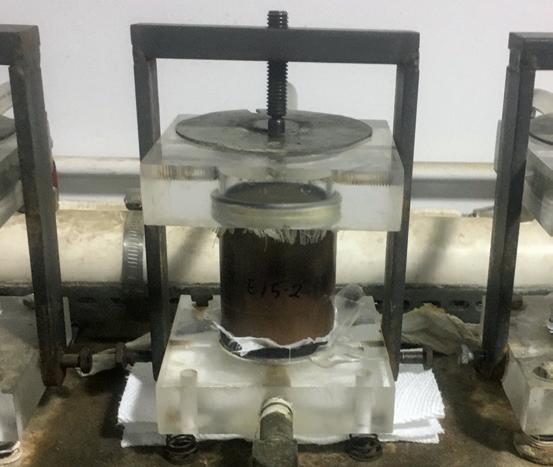
3 minute read
BY THE NUMBERS
AGRONOMY
BY THE NUMBERS
Advertisement
By Jeff Eldridge :: Photography courtesy of the International Sports Turf Research Center, Inc.
As you know, we recently completed our greens renovation project in October and opened back up for play in December.
This article will serve as a follow-up to previous articles regarding the project and will help provide a behind-thescenes look at some of the data we have collected through
testing both before and after the project was completed.
A frame from time-lapsed photos taken while the core sample goes through a natural drying process.
One of the most important numbers we have been looking at has been the infiltration rates through the greens profile as measured in inches per hour. This number is of extreme importance for managing bentgrass greens as it is a measure of the green’s ability to move water away from the surface, down and through the profile of the green. Water that can’t move properly through the profile will stay up near the surface and can cause serious issues with disease, fertility, compaction, algae and scalping. Water stuck in the upper profile during periods of extreme heat can also “boil” the roots resulting in immediate stress and sometimes death. Also, and perhaps most importantly for us, proper water infiltration is vital to our ability to perform proper flushing of the greens (flushing is the process we use to carry salts found in our irrigation water down and away from the root zone).
Clearly, the ability to move water is of utmost importance and we are encouraged by the numbers that came in from our recent round of testing. Professionals recommend at least six inches per hour as a minimum number for healthy, established greens. This is also the minimum number needed to perform a proper flushing of the greens.
Our historical numbers point to having been well below the six-inch number and have had a negative impact on the ability to manage the greens in times of stress. Looking at the numbers from prior years’ testing, our average infiltration rate in the top four inches averaged 2.7 inches per hour with a low reading coming in at .92 inches and the high coming in at 4.62 inches. Our most recent readings (taken in February 2020) came in averaging 7.5 inches per hour with a low of 2.31 and a high of 10.38 — a 64% improvement! This improvement comes from the work done in preparation for the sod to be installed last fall. Our process included removing the top inch of material, adding fresh sand and then cultivating the soil profile down to a four-inch depth. This
Undisturbed core samples being tested in a permeameter, used to measure infiltration rates.

process removed the bicarbonate build-up in the top inch and broke up any layering in the two to four-inch profile.
As stated above, we are encouraged by the huge improvement we have seen in the last four months in the infiltration rates. It is great to see the work on the renovation, along with the multiple aerifications performed since the renovation, paying huge dividends. Rest assured, we will be monitoring the infiltration rates going forward to make sure they stay in the range for proper plant growth. This is imperative to give the greens their best opportunity for survival.
Jeff Eldridge, CGCS, is the Director of Agronomy at The Clubs of Cordillera Ranch. He can be reached at jeldridge@ cordilleraranch.com or 830.336.9179.







